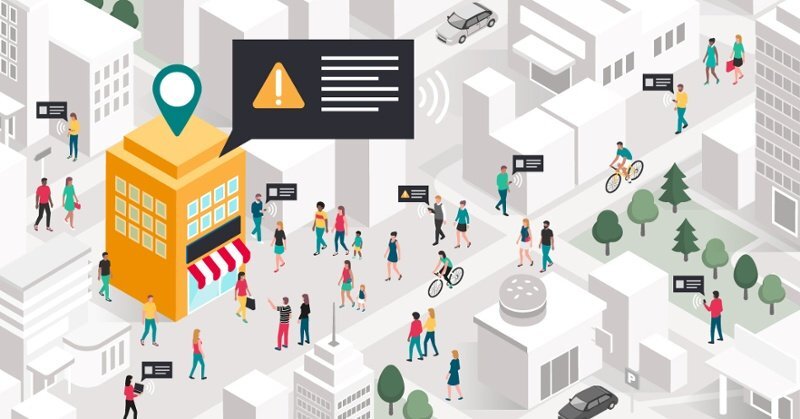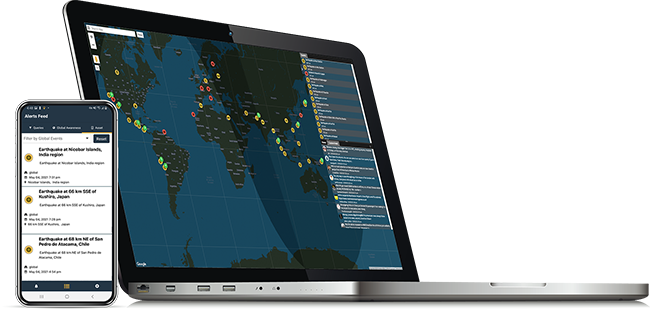The power of social media is undeniable, and social media intelligence has become a cornerstone of proactive threat detection programs.
With over 4.6 billion social media users worldwide, there is a wealth of information corporate security teams can glean from various social media platforms. Using specialized tools to analyze this data, organizations can identify potential personnel threats, protect physical locations, and even safeguard their online reputation.
But, as with any tool, social media has a flip side. It can become a significant vulnerability for companies lacking a proper safety net. Having a system that can filter through the endless streams of social media chatter and pinpoint relevant data is crucial.
Whether you’re a beginner or a seasoned analyst, this blog post will enhance your understanding of why social media business intelligence is critical to any effective security strategy.
Executive Protection

Many of the initial rumblings of threats to company executives and personnel are first identified on social media.
For example, as corporate leadership roles remain in the spotlight, executives face a concerning threat - doxxing. This invasive practice entails publicly releasing an individual’s private information online without consent. This information includes passwords, medical information, and social security numbers. If that's not scary or humiliating enough, doxxing can also incite harassment or cause physical harm to the targeted professional or their property.
In corporate crises, speed is paramount. A Google search rarely uncovers doxxed content. Social media business intelligence allows security teams to identify threats to personnel – and shut them down - before they spiral out of control or spread to a global audience. Additionally, corporate security teams can obtain real time-intelligence about where or when an attack may occur instead of being surprised and trying to respond after the fact.
Property Threats

Threats to corporate personnel are the most critical situations to look for when conducting social media business intelligence operations. Still, property damage – including a company's physical location or an executive's home – is also a significant concern.
For example, In 2020, anger towards a Manchester United executive vice-chairman spread across social media platforms and beyond, culminating with angry fans attacking the executive’s home with flares.
An estimated 80% of burglars check Facebook and other social media sites before they rob a home or business. Social media posts often contain information about when the property will be unoccupied or tips that will make it easier to break in (such as security camera location).
With the correct intel, security teams can identify if any bad actors have been casing a company or an executive's home online and if they have shared this information with a broader audience. In addition, by reviewing content and identifying internal social media posts that may contain dangerous information (like photos that show a business owner or executive are out of town), security teams can remove them before potential threat actors take note.
Internal Threats

Sometimes, threats can originate closer to home. Some of the biggest data breaches occur because a threat actor compromised a single employee (intentionally or accidentally). For example, a LinkedIn photo of an employee with a company ID badge can be a launching point for bad actors to gain broad access to a company.
With social media business intelligence and employee training on protecting themselves from common scams and schemes, security teams can efficiently identify any risks that begin from inside an organization.
Brand Protection

Outside of physical threats to personnel and property, social media business intelligence can also identify threats to a company’s brand.
For example, counterfeiting is one of the biggest problems for established corporations and companies worldwide. The total amount of counterfeit goods sold yearly is around $1.7 trillion to $4.5 trillion, which can devastate a business's profitability. Social media monitoring can put a tourniquet on a growing problem for trusted brands.
Misinformation

Social media business intelligence can also be constructive when combatting misinformation and smear campaigns. Misinformation can harm an executive’s reputation and the value of the organization. The consequences of false reports could put executives at high risk of an attack and incite anger.
Whether it’s staging a car crash to imply a faulty vehicle or faking a letter from a chief executive to alter a corporate strategy, fake news that generates headlines can — and has — hurt a company’s bottom line. The result? Plummeting stock prices, death threats directed at executives, and a public relations nightmare that is, in many cases, irreversible.
As corporate security teams strive to respond quickly, monitoring rumors and false reports is critical. By proactively detecting and managing misinformation, companies can limit the destructive impact of wrong information on their executives.
A Smart Monitoring Platform
Delving into social media can provide a wealth of essential and comprehensive information to security teams, but utilizing a system that goes miles beyond the basics is vital.
Security teams can scan popular social media platforms like LinkedIn and Instagram. However, threats often begin in the darker corners of the internet and more obscure social media channels that attract bad actors.
In addition, analysts and IT departments often need more resources to monitor every corner of social media 24/7. And with fluid information that can morph and spread within minutes, it is impossible to identify every potential threat manually.
This is where LifeRaft’s Navigator comes into play.
At LifeRaft, we constantly pinpoint vulnerabilities and potential threat actors through automated collection, combing through common social media platforms and alternative social media channels where threats often begin. Our intel-driven platform filters out the most valuable information to security teams with deep analytics that outlines the who, what, where, and when of potential threats.
The Bottom Line on Social Media Business Intelligence
Social media is brimming with data that allows security teams to be proactive instead of reactive, and we can help you find it.
Your team can mitigate threats and respond faster to incidents by using social media to identify risks. This effort allows you to stretch your security budget for maximum effectiveness.
Connect with us today, and let’s work together to launch a comprehensive social media intelligence strategy that will help you keep your personnel, customers, and property safe.

